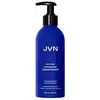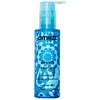What's inside
What's inside
 Key Ingredients
Key Ingredients

 Benefits
Benefits

 Concerns
Concerns

 Ingredients Side-by-side
Ingredients Side-by-side

Water
Skin ConditioningStearyl Alcohol
EmollientCetyl Alcohol
EmollientHydrogenated Farnesene
EmollientBrassicamidopropyl Dimethylamine
Skin ConditioningCinnamidopropyltrimonium Chloride
Squalane
EmollientCamellia Japonica Seed Oil
EmollientGlycerin
HumectantCetearyl Olivate
Sodium PCA
HumectantArginine
MaskingGlycine
BufferingAlanine
MaskingSerine
MaskingProline
Skin ConditioningValine
MaskingThreonine
Isoleucine
Skin ConditioningHistidine
HumectantPhenylalanine
MaskingPCA
HumectantTocopherol
AntioxidantCitrus Reticulata Peel Oil
MaskingSodium Lactate
BufferingSorbitan Olivate
EmulsifyingAspartic Acid
MaskingSodium Gluconate
Skin ConditioningEthylhexylglycerin
Skin ConditioningBenzyl Alcohol
PerfumingParfum
MaskingHexyl Cinnamal
PerfumingLimonene
PerfumingWater, Stearyl Alcohol, Cetyl Alcohol, Hydrogenated Farnesene, Brassicamidopropyl Dimethylamine, Cinnamidopropyltrimonium Chloride, Squalane, Camellia Japonica Seed Oil, Glycerin, Cetearyl Olivate, Sodium PCA, Arginine, Glycine, Alanine, Serine, Proline, Valine, Threonine, Isoleucine, Histidine, Phenylalanine, PCA, Tocopherol, Citrus Reticulata Peel Oil, Sodium Lactate, Sorbitan Olivate, Aspartic Acid, Sodium Gluconate, Ethylhexylglycerin, Benzyl Alcohol, Parfum, Hexyl Cinnamal, Limonene
Water
Skin ConditioningBehentrimonium Methosulfate
Cetyl Alcohol
EmollientC13-15 Alkane
SolventHippophae Rhamnoides Fruit/Seed Oil
AntimicrobialHyaluronic Acid
HumectantPolyglutamic Acid
Skin ConditioningSpirulina Platensis Extract
Skin ProtectingCocos Nucifera Water
MaskingSelaginella Lepidophylla Extract
EmollientInonotus Obliquus Extract
Skin ConditioningRhodiola Rosea Extract
EmollientEleutherococcus Senticosus Root Extract
AstringentRhaponticum Carthamoides Root Extract
Skin ConditioningGlycerin
HumectantCaprylic/Capric Triglyceride
MaskingGuar Hydroxypropyltrimonium Chloride
Skin ConditioningSodium Phytate
Propanediol
SolventGlycereth-2 Cocoate
EmulsifyingEthylhexylglycerin
Skin ConditioningPotassium Sorbate
PreservativeButylene Glycol
HumectantBenzoic Acid
MaskingSodium Benzoate
MaskingPhenoxyethanol
PreservativeParfum
MaskingWater, Behentrimonium Methosulfate, Cetyl Alcohol, C13-15 Alkane, Hippophae Rhamnoides Fruit/Seed Oil, Hyaluronic Acid, Polyglutamic Acid, Spirulina Platensis Extract, Cocos Nucifera Water, Selaginella Lepidophylla Extract, Inonotus Obliquus Extract, Rhodiola Rosea Extract, Eleutherococcus Senticosus Root Extract, Rhaponticum Carthamoides Root Extract, Glycerin, Caprylic/Capric Triglyceride, Guar Hydroxypropyltrimonium Chloride, Sodium Phytate, Propanediol, Glycereth-2 Cocoate, Ethylhexylglycerin, Potassium Sorbate, Butylene Glycol, Benzoic Acid, Sodium Benzoate, Phenoxyethanol, Parfum
 Reviews
Reviews

Alternatives
Ingredients Explained
These ingredients are found in both products.
Ingredients higher up in an ingredient list are typically present in a larger amount.
Cetyl Alcohol is a fatty alcohol. Fatty Alcohols are most often used as an emollient or to thicken a product.
Its main roles are:
Though it has "alcohol" in the name, it is not related to denatured alcohol or ethyl alcohol.
The FDA allows products labeled "alcohol-free" to have fatty alcohols.
Learn more about Cetyl AlcoholEthylhexylglycerin (we can't pronounce this either) is commonly used as a preservative and skin softener. It is derived from glyceryl.
You might see Ethylhexylglycerin often paired with other preservatives such as phenoxyethanol. Ethylhexylglycerin has been found to increase the effectiveness of these other preservatives.
Glycerin is already naturally found in your skin. It helps moisturize and protect your skin.
A study from 2016 found glycerin to be more effective as a humectant than AHAs and hyaluronic acid.
As a humectant, it helps the skin stay hydrated by pulling moisture to your skin. The low molecular weight of glycerin allows it to pull moisture into the deeper layers of your skin.
Hydrated skin improves your skin barrier; Your skin barrier helps protect against irritants and bacteria.
Glycerin has also been found to have antimicrobial and antiviral properties. Due to these properties, glycerin is often used in wound and burn treatments.
In cosmetics, glycerin is usually derived from plants such as soybean or palm. However, it can also be sourced from animals, such as tallow or animal fat.
This ingredient is organic, colorless, odorless, and non-toxic.
Glycerin is the name for this ingredient in American English. British English uses Glycerol/Glycerine.
Learn more about GlycerinParfum is a catch-all term for an ingredient or more that is used to give a scent to products.
Also called "fragrance", this ingredient can be a blend of hundreds of chemicals or plant oils. This means every product with "fragrance" or "parfum" in the ingredients list is a different mixture.
For instance, Habanolide is a proprietary trade name for a specific aroma chemical. When used as a fragrance ingredient in cosmetics, most aroma chemicals fall under the broad labeling category of “FRAGRANCE” or “PARFUM” according to EU and US regulations.
The term 'parfum' or 'fragrance' is not regulated in many countries. In many cases, it is up to the brand to define this term.
For instance, many brands choose to label themselves as "fragrance-free" because they are not using synthetic fragrances. However, their products may still contain ingredients such as essential oils that are considered a fragrance by INCI standards.
One example is Calendula flower extract. Calendula is an essential oil that still imparts a scent or 'fragrance'.
Depending on the blend, the ingredients in the mixture can cause allergies and sensitivities on the skin. Some ingredients that are known EU allergens include linalool and citronellol.
Parfum can also be used to mask or cover an unpleasant scent.
The bottom line is: not all fragrances/parfum/ingredients are created equally. If you are worried about fragrances, we recommend taking a closer look at an ingredient. And of course, we always recommend speaking with a professional.
Learn more about ParfumWater. It's the most common cosmetic ingredient of all. You'll usually see it at the top of ingredient lists, meaning that it makes up the largest part of the product.
So why is it so popular? Water most often acts as a solvent - this means that it helps dissolve other ingredients into the formulation.
You'll also recognize water as that liquid we all need to stay alive. If you see this, drink a glass of water. Stay hydrated!
Learn more about Water